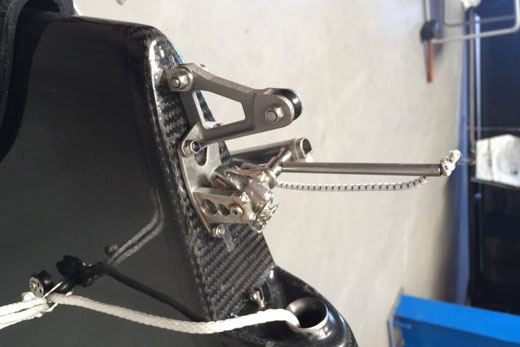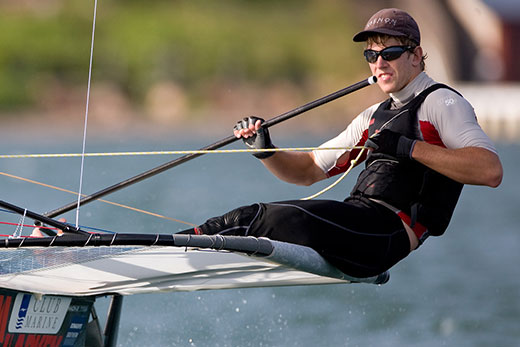Peter Burling is giving part of the credit for his foiling moth worlds win to parts created in Tauranga using titanium 3D printing technology being developed at the Bay of Plenty Polytechnic.
Burling partly credits titanium 3D printing technology for his foiling moth worlds win. Photo: Sea&Co.
The titanium industry development association's company Rapid Advance Manufacturing Ltd were able to build a prototype adjustable forestay part within days.
While building up for the Moth Dinghy World Champs, Emirates Team New Zealand sailors and designers came up with an innovative adjustable forestay system, says RAM spokesperson Angela Werder.
'Lead times were short, the part was small and complex which would have made machining prohibitively expensive so Emirates Team New Zealand contacted RAM,” says Angela.
The titanium pieces were on board, ready for racing, within days and were an integral part of the crew taking home the World title.
'I was really impressed with the part we used on the foiling Moth,” says Moth World Champion Peter Burling.
'The resolution and surface finish of the part was great and tolerances allowed fast implementation. Also, it was really useful how you can create nearly any shape and optimise your part without having to worry about CNC machining paths in design and production. Thanks to the team at RAM for getting the pieces to us urgently, so we could go on to win”.

RAM used a technology called selective laser melting to produce the pieces out of titanium alloy, which is versatile, reliable. It has the highest strength to weight ratio of any metal, is corrosion resistant and is one of the most abundant elements in the earth's crust.
The data from the CAD 3D design is converted into 2D layer profile. The part is built as each layer of powder, approx 30-60 microns thick, is then selectively melted by laser to form the solid object. The wiper pushes the excess powder off the plate, which drops to then apply another layer of powder. This 3D printing process enables rapid prototyping of complex, high tech objects, with complex interior detail.
RAM is one of the few commercial 3D machine operators in the world, and has a design service available. Models are most commonly made in Solidworks, Parasolid and STEP. STL files can be used and the design team has limited opportunity to assist with any design issues if this application is used.
Titanium has also proven its strength in the Victory Knives XTB Titanium Sailors Blade. This knife was designed initially for the Americas Cup Team New Zealand Crew, to be worn on the wetsuit thigh pocket and vest as the team's emergency knife. It is now rated as the Ultimate Rope Blade using advanced 3D printing technology and specialised hardening capability, with research and development all within NZ. At only 31g, it is extremely light. The blade has a corrosion resistance unobtainable with even the most advanced stainless steels.

.jpg)



0 comments
Leave a Comment
You must be logged in to make a comment.